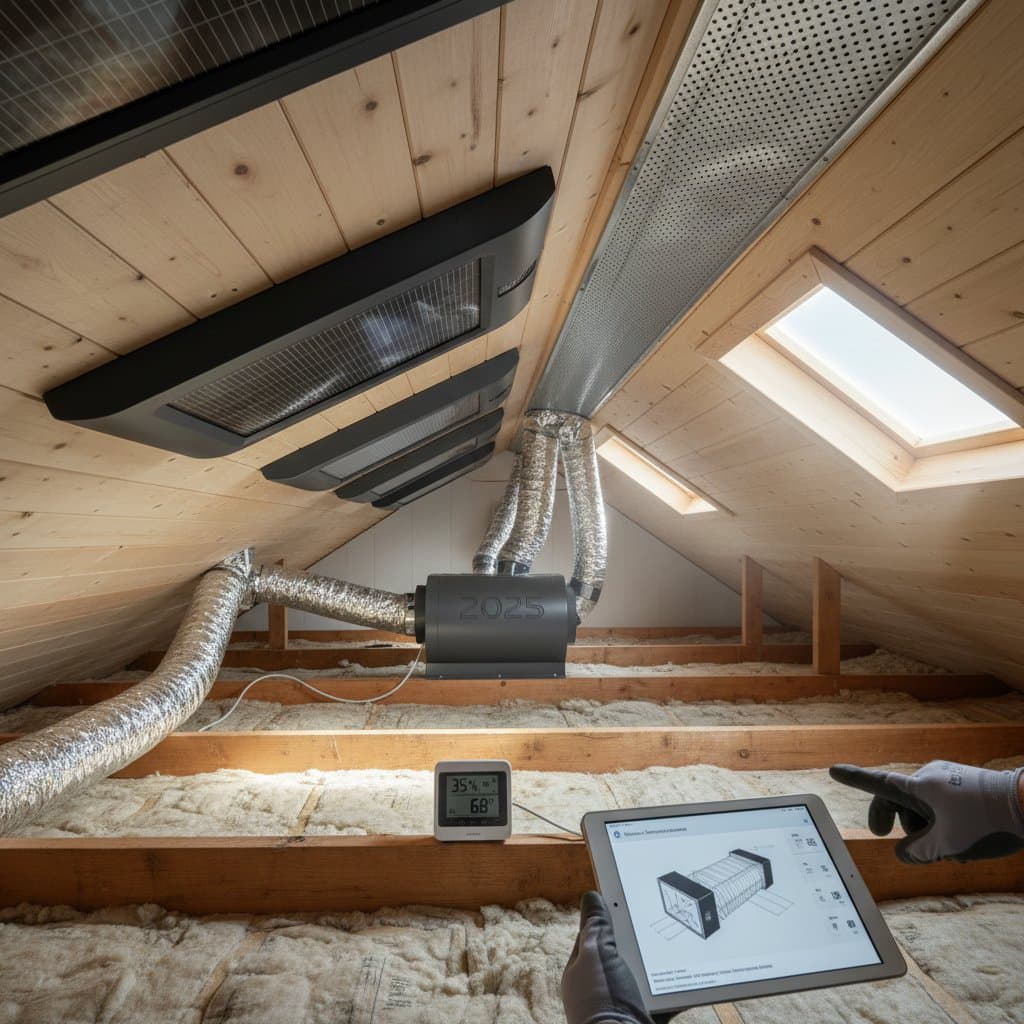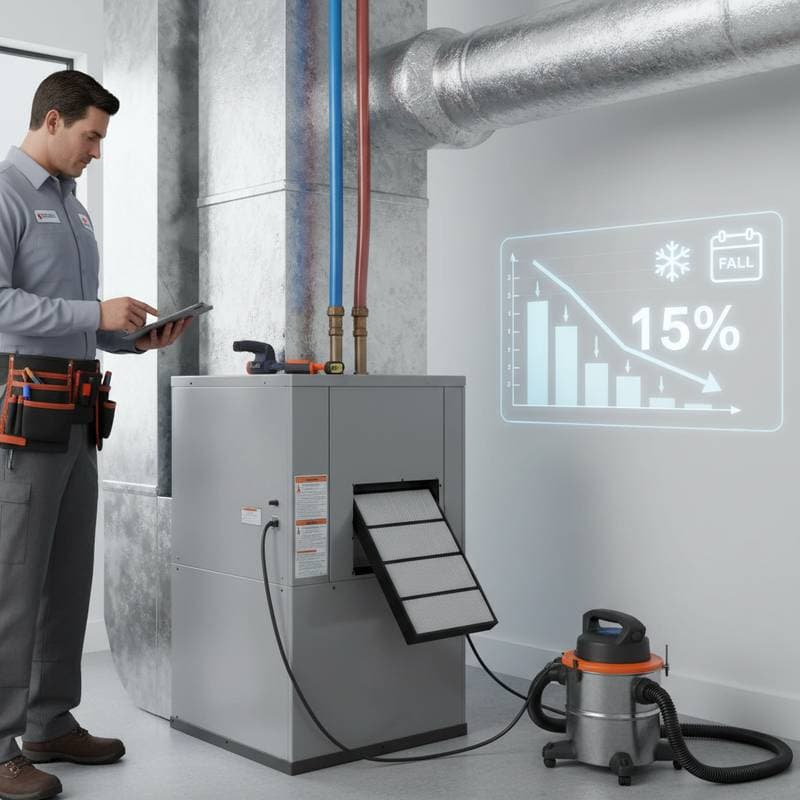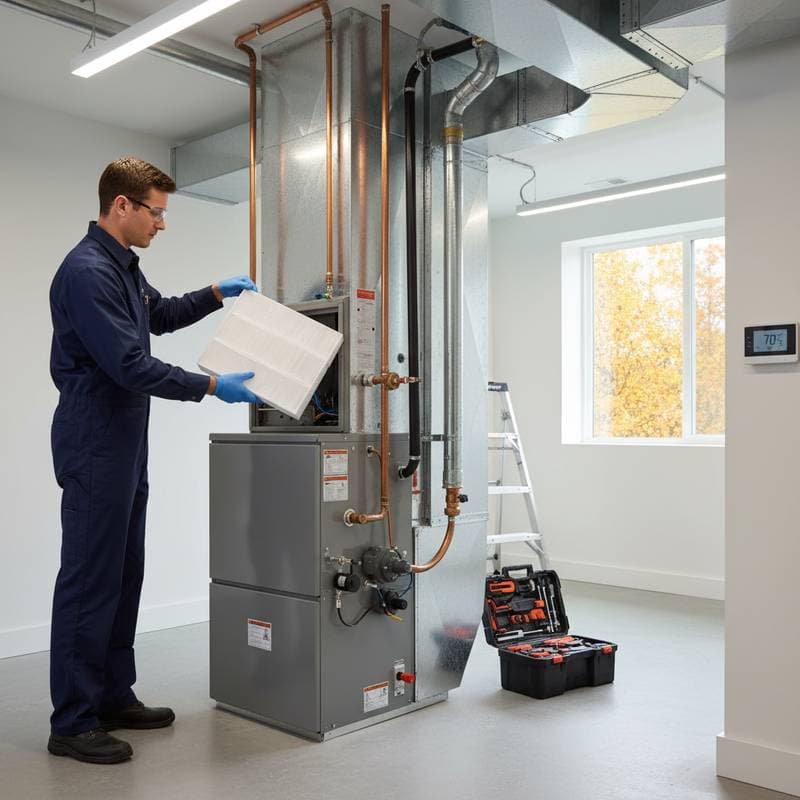Winter-Proof Your HVAC: Fall Maintenance Checklist
As the chill sets in, your home's comfort depends on how well your heating and ventilation system performs. Many homeowners wait until the first cold night to turn on the furnace, only to find it groaning under dust or worn parts. A careful fall maintenance routine keeps your HVAC system reliable, energy-efficient, and ready for long winter use. This detailed guide breaks down every step, from cleaning filters to sealing ducts, so you can prevent surprise breakdowns and lower bills while keeping your home warm.
Step-by-Step Fall HVAC Maintenance Checklist
The following checklist covers every key task for winter-proofing your HVAC system. Each step is simple but vital.
1. Change or Clean Air Filters
Dirty filters restrict airflow, forcing your furnace to work harder. Replace disposable filters or wash reusable ones. Check monthly during heavy use periods. Use filters with the proper MERV rating for your system, and note the airflow direction arrow when installing.
Suggested visual: an image showing a clean vs. dusty filter with alt text “Dirty HVAC filter next to clean replacement filter.”
2. Inspect the Thermostat
Set your thermostat to heating mode and raise the temperature a few degrees. Listen for the system to start and ensure warm air flows from the vents. If it delays or cycles on and off quickly, the thermostat may need recalibration or new batteries. Upgrading to a programmable or smart thermostat saves energy by adjusting temperatures automatically when you are asleep or away.
3. Clean Vents and Registers
Remove vent covers and vacuum inside ducts as far as your hose reaches. Dust, pet hair, and debris block airflow and lower efficiency. Wipe the vent covers with mild soap and water before reinstalling. Avoid covering vents with furniture or rugs, as this traps heat and overworks the system.
4. Inspect Ductwork for Leaks
Leaky ducts can lose up to a third of heated air. Walk through your home and feel for drafts or weak airflow. In attics or basements, look for gaps or holes where ducts connect. Seal small leaks with foil-backed tape or mastic sealant. For large or hidden leaks, professional duct sealing may be needed.
Suggested chart: a cost comparison between DIY duct sealing materials and professional services.
5. Check the Furnace Burner and Flame Sensor
Turn off power to the furnace before opening access panels. Use a soft brush or cloth to remove soot from burners. A clean flame burns steady and blue. Yellow or flickering flames can signal dirt, misalignment, or gas issues that require professional attention. The flame sensor, usually a small rod near the burner, can be gently cleaned with fine steel wool.
6. Inspect the Blower Assembly
The blower motor circulates warm air through your ducts. Remove the access panel and vacuum around the blower wheel and motor. Tighten loose screws and ensure the fan spins freely. If you notice grinding or squealing sounds, bearings may be wearing out. A licensed technician can lubricate or replace parts safely.
7. Test the Ignition System
Modern furnaces use electronic ignition rather than pilot lights. When the thermostat signals for heat, listen for clicks followed by ignition. A delay or repeated clicking might indicate a worn igniter or dirty sensor. Replacing an igniter is usually simple but must be done with the power off and the correct part for your model.
8. Clean the Condensate Drain Line
High-efficiency systems create condensation that drains through a small pipe. Over time, algae or sludge can block this line. Flush it with a mix of vinegar and warm water to keep it clear. A clogged line can lead to water leaks or system shutdowns.
9. Check and Replace Belts
Older units may still use belts to drive fans. Inspect them for cracks or fraying. Replace worn belts promptly to prevent sudden failures. Keep spare belts on hand if your model uses nonstandard sizes.
10. Examine Electrical Connections
Loose or corroded connections can cause short circuits or inconsistent heating. Turn off power before inspecting wires. Look for discoloration or melted insulation. Tighten connections carefully and replace any damaged wires. If you are unsure, call a technician rather than risk electric shock.
11. Test Carbon Monoxide Detectors
Carbon monoxide is a silent hazard. Test detectors near sleeping areas and replace batteries at the start of each season. If your detector is older than its recommended service life, replace it entirely. This small step keeps your household safe.
12. Clear the Area Around the Furnace
Keep at least three feet of open space around your furnace. Remove storage boxes, cleaning supplies, or flammable materials. Adequate airflow helps maintain safe operation and prevents overheating.
13. Inspect the Outdoor Unit
For homes using a heat pump, clean leaves and dirt from the outdoor coil. Trim back plants or shrubs to give at least two feet of clearance. Check that the unit sits level on its base, and confirm the fan blades spin without obstruction. Covering the top with a breathable guard can shield it from falling ice while allowing moisture to escape.
14. Review Insulation and Weatherstripping
Even a perfect furnace cannot overcome poor insulation. Check attic insulation depth and look for gaps around windows or doors. Replace worn weatherstripping and apply caulk where needed. These small upgrades reduce heat loss and reduce strain on your HVAC system.
Common Problems Found During Fall Checks
Routine maintenance uncovers hidden issues that might cause midwinter breakdowns. Some of the most frequent include:
- Clogged filters that restrict airflow and overheat the furnace
- Dirty burners that cause poor combustion and higher fuel use
- Faulty thermostats that misread temperatures
- Cracked heat exchangers that leak combustion gases
- Worn fan belts or bearings that create noise and reduce efficiency
Finding these early lets you plan repairs before the coldest days hit. Technicians often share that most emergency calls could have been avoided with a simple filter change or inspection weeks earlier.
Safety Tips for Homeowners
- Always cut power before opening furnace panels.
- Never use flammable cleaners near gas lines.
- Keep children and pets away from HVAC equipment.
- If you smell gas, leave the house and call emergency services immediately.
- Avoid blocking air returns or vents with furniture.
Being cautious keeps your system and family safe while you work through your checklist.
Pro Tips for Success
- Create a seasonal schedule. Mark your calendar for fall maintenance every year. Consistency prevents forgotten tasks.
- Keep a system journal. Record service dates, filter changes, and parts replaced. This helps track performance and warranty details.
- Watch for performance clues. Uneven heating, strange noises, or rising bills hint that maintenance is overdue.
- Use quality materials. Cheap filters and sealants may fail faster.
- Check manufacturer guidelines. Each model has specific cleaning and safety instructions.
These habits make every future tune-up faster and more effective.
Building on Your Skills
Once you complete your fall checklist, take time to understand how your system responds. Track temperature consistency and energy use. If your home warms evenly and bills remain steady, your preparation worked. If problems show up, note them early so a technician can address them before midseason.
Homeowners who follow these steps year after year often see clear results. They report fewer emergency calls, cleaner air, and longer furnace life. The key is steady care, not occasional fixes.
Keeping Your System Strong Through Winter
Your HVAC system is the heart of home comfort during cold months. Fall maintenance keeps that heart beating smoothly. Clean filters, sealed ducts, tuned burners, and accurate thermostats all combine to deliver warm air without waste. Small actions now prevent big problems later.
Imagine a quiet evening inside while frost coats the windows. The furnace hums evenly, the air feels fresh, and you are confident in your system's strength. That peace comes from preparation.
Keep your checklist handy, check your system before the chill deepens, and treat maintenance as part of your seasonal routine. Your home will thank you with steady warmth, lower costs, and dependable comfort all winter long.





